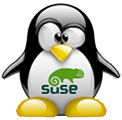NAME
mytool - manipulate map files for yudit, uniconv and uniprint
SYNOPSIS
mytool [ -info ] [ -test ] [ -showkeys ] [ -decode ] [ -encode ] [ -strip ] [ -benchmark ] [ -name new-name ] [ -comment new-comment ] [ -type new-type ] [ -write output-file ] [ -my input-file ] [ -mys input-file ] [ -rmys input-file ] [ -kmap input-file ] [ -rkmap input-file ] [ -uni:l,u input-file [ -8 ] [ -high ] [ -low ] [ -runi:l,u input-file [ -8 ] [ -high ] [ -low ] ] [ -convert out-file-format ]
DESCRIPTION
mytool is a my map file manipulation program in the yudit distribution. It can generates so-called binary nbit ( my ) map file that can map any sequences of bytes into any sequences of bytes. These sequences of bytes can be grouped into 1,2,4 and 8 bytes long words. The input sequence length may be different from the matched sequence length. ’i / ’n -> ’b specifies that the word ’in’ produces ’b’ but only the ’i is consumed from the input buffer.
It can also generate a so-called binary umap file, that maps 8 or 16 bit single words into 16 bit single words and it contains the reverse map too.
It can also disassemble the input map and produce a mys source file.
The input can be a binary umap file, a my file, mys file a uni and a kmap file for yudit. It is recommended that all kmap files use the new mys format because it gives more freedom to define the mapping.
The yudit distribution has a simple document yudit/doc/my.doc on the binary map formats, and a source file example file yudit/mytool/my/example.mys please refer to this for more details.
OPTIONS
| -info | |
| prints out a small information on the current map. | |
| -test | |
| lets you test the map interactively. | |
| -showkeys | |
| show alls the keys in the map file. | |
| -encode | |
| builds a state machine in the encoding part of the map file. The resulting map file can be written to disk with the -write option The resulting my files can contain state machines to speed-up conversion. A state machine based my file can manifest 10%-70% performance improvement, so it may be desirable for encoding fontmaps. For fontmaps the bumap format might be better suited where only one character and not a sequence of characters need to be mapped. | |
| -decode | |
| builds a state machine in the decoding part of the map file. | |
| -strip | |
| strips off the state machines from the map files. The -write option can be used to save the new map file. | |
| -benchmark | |
| option performs a simple benchmark test on the map file, to compare speed of simple, state machine based and binary map based map files. | |
| -nocomment | |
| option strips all comments from an input source file of format mys kmap uni. It does not strip comments from a binary file. | |
| -name new-name | |
| assigns a name to the map file. | |
| -comment new-comment | |
| assigns a comment to the map file.
| |
| -type new-type | |
| assigns a map file a distinctive type, that can be kmap or fontmap but it is only informative. Keymaps can be used as fontmaps and vice versa. | |
| -write output-file | |
| writes the data into an output file. mytool never modifies the original file. All modifications should be explicitly saved with the this option. Never specify the same file for input and output. | |
| -my input-file | |
| load a binary map file. Only one of this option can be specified. | |
| -mys input-source-file | |
| load a source file. | |
| -rmys input-source-file | |
| load a source file and reverse it - make encoding from decoding and
vice versa.
| |
| -kmap input-source-file | |
| load a source file in kmap format. | |
| -rkmap input-source-file | |
| load a source file and reverse it - make encoding from decoding and
vice versa.
| |
| -uni:l,u input-source-file | |
| load a source file in Unicode Consortium format. This format has the local code in column l, and unicode in column u. The numbering of columns start from 0. | |
| -runi:l,u input-source-file | |
| load a source file in Unicode Consortium format and reverses it. Make
encoding from decoding and vice versa.
| |
| -8 | option can be used with the -uni or -runi options. It specifies that the input is 8 bit and not 16 bit. |
| -high | option can be used with the -uni or -runi options. It specifies that the key should be or’ed with 0x8080. |
| -low | option can be used with the
-uni or
-runi options. It specifies that the key should be and’ed with 0x7f7f.
|
| -convert output-file-format | |
| converts the map file to a format. It is useful only when combined with -write otion. The possible formats are my -binary, mys -source, myc -my-c-source, umap -umap-c-source, bumap -binary-umap formats. For maps where only a single 8 or 16 bit local code should be converted into 16 bit unicode and vice versa, the umap file formats are recommended. The c-source files are provided so that you can inlucde a full map into the c program. | |
DIAGNOSTICS
mytool prints out an error message and exits with a non-zero status on error. If there is no error the exit status is zero.
SEE ALSO
uniconv
AUTHOR
This program was written by gsinai@iname.com (Gaspar Sinai).
Tokyo, 03 January, 2000.
